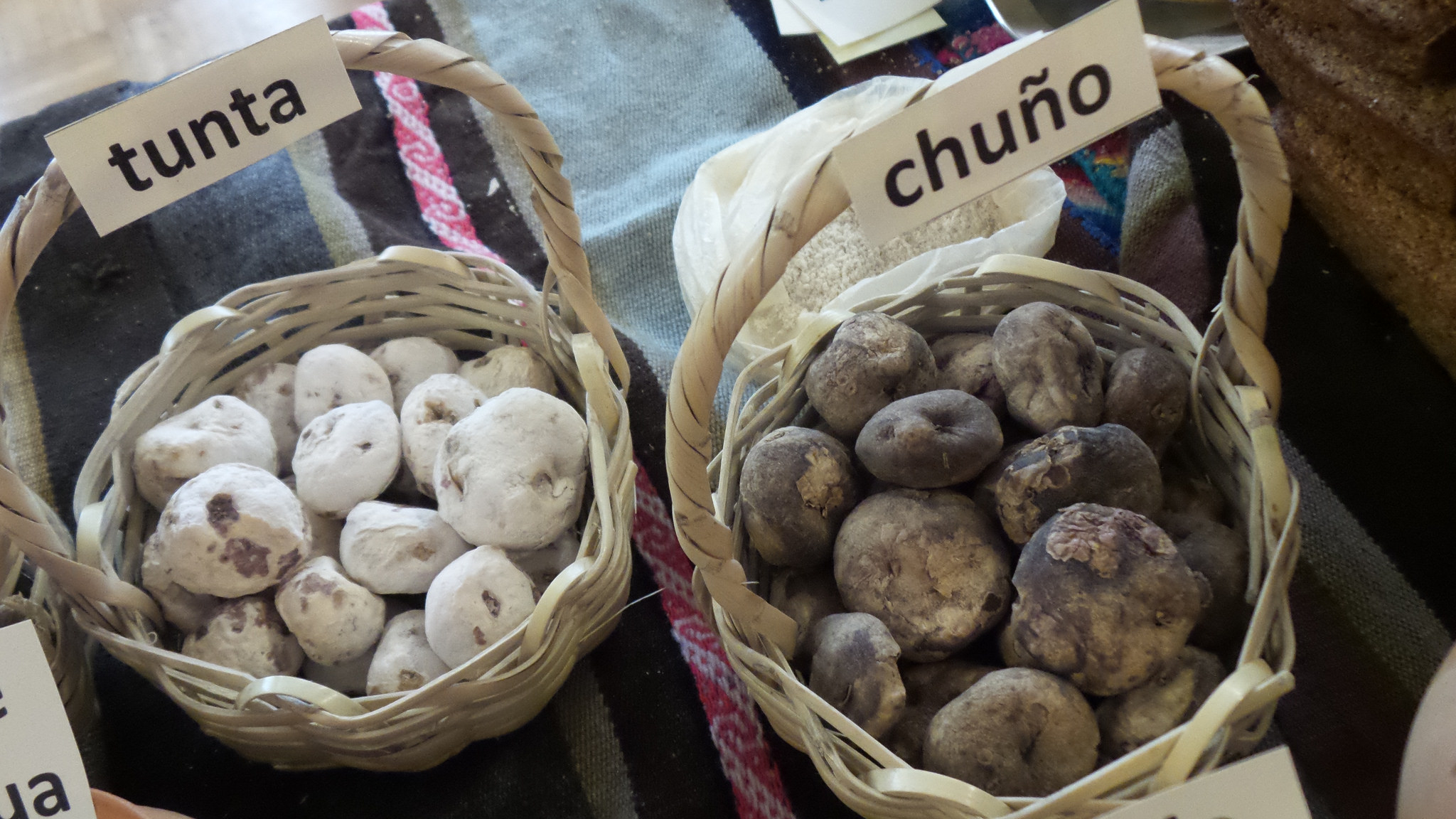New paper links farmers' perceptions of crop diversity and adaptation to climate change

Farmers in the Andean highlands are facing more unpredictable drought, frost, hail, and pest and disease outbreaks under climate change. A study by Bioversity International in partnership with PROINPA investigated how eight communities in the Lake Titicaca region of Bolivia perceive the performance of their local crops and are using them in facing changing environmental conditions. The results just published in the journal Environment, Development and Sustainability reveal that some local crops and varieties are threatened by climate change.
By Gennifer Meldrum, Research Fellow, Nutrition and Marketing Diversity
Farmers in the Andean highlands are facing more unpredictable drought, frost, hail, and pest and disease outbreaks under climate change. A study by Bioversity International in partnership with PROINPA investigated how eight communities in the Lake Titicaca region of Bolivia perceive the performance of their local crops and are using them in facing changing environmental conditions. The results just published in the journal Environment, Development and Sustainability reveal that some local crops and varieties are threatened by climate change.
Native tubers oca, papalisa, and isaño were observed by many farmers as highly vulnerable to failure in the increasingly risky and unpredictable environment. Fava bean and pea, which were introduced by Spanish colonists after 1792, are also vulnerable to increasing drought risk. Action to improve the resistance and performance of these crops may be needed to ensure their continued roles in crop rotation cycles, maintaining soil fertility, and providing diet diversity.
Varieties of the globally-important potato species Solanum tuberosum—which was domesticated in the Andean region thousands of years ago—also stood out as susceptible to climate change. Farmers have nonetheless been increasing the cultivation of these potatoes because of their preferred taste and strong marketability. Following a similar trend, some communities have introduced commercial vegetable production in the last decade, even though these horticultural crops are dependent on increasingly precarious water sources and vulnerable to hail that is becoming more and more of a problem during the growing season.
The expansion of commercial crop production was farmers' response to take advantage of warming temperatures and new market opportunities. At the same time, this trend could make farming systems more fragile under climate change because of the crops’ greater sensitivity to climate stresses. The displacement of local crops and varieties furthermore reduces the diversity of local farm systems, which is critical to their resilience and adaptive capacity.
While many local crops were perceived as susceptible to climate change, some stood out as highly resistant to the associated stresses. In particular, luki potatoes (S. juzepczukii) were ranked by all the participating communities as one of their most reliable cultivations with tolerance to frost, drought, and hail, and resistance to pests and disease. These varieties and other hardy Andean potatoes in the species S. juzepczukii, S. curtilobum, and S. ajanhuiri are traditionally planted along with S. tuberosum to provide harvest security.
A diversity assessment done in one of the study communities (Cachilaya) revealed that luki potatoes had fallen out of cultivation and the farmers wanted to recover this hardy traditional crop. With the support of PROINPA, local farmers sought luki seed from neighboring communities, which they planted and added to the community seed bank. The hardy kaisalla variety (S. juzepczukii) was similarly reintroduced in the study community of Corqueamaya. In this way, participatory variety characterization and diversity assessment can guide targeted diversification and recovery of stress-tolerant crops to support adaptation to climate change.
 While the luki potatoes are hardy to climate stress, it was discovered during the study that the tubers are increasingly difficult to process. These bitter potatoes are traditionally freeze-dried by the frosts that come after the harvest period. However, with warming conditions, the frost is no longer consistent or deep enough to complete this critical processing step. Alternative approaches for processing bitter potatoes may be needed so that farmers can continue to use them in their food security strategies. Overall, the study found that strengthening community resilience will require a combination of actions, including maintaining and expanding crop portfolios and restoring soil and ecosystem health, using a combination of traditional and innovative approaches.
While the luki potatoes are hardy to climate stress, it was discovered during the study that the tubers are increasingly difficult to process. These bitter potatoes are traditionally freeze-dried by the frosts that come after the harvest period. However, with warming conditions, the frost is no longer consistent or deep enough to complete this critical processing step. Alternative approaches for processing bitter potatoes may be needed so that farmers can continue to use them in their food security strategies. Overall, the study found that strengthening community resilience will require a combination of actions, including maintaining and expanding crop portfolios and restoring soil and ecosystem health, using a combination of traditional and innovative approaches.
Learn more: Climate change and crop diversity: farmers’ perceptions and adaptation on the Bolivian Altiplano
This study was completed as part of the project 'Reinforcing the resilience of poor rural communities in the face of food insecurity, poverty and climate change through on-farm conservation of local agrobiodiversity' supported by the International Fund for Agricultural Development (IFAD) and the CGIAR Research Program on Climate Change, Agriculture and Food Security (CCAFS) from 2011 to 2015.
Photo (top): Participants in the focus group discussions on local crops and climate change in Suriquiña in the Department of La Paz. Credit: Bioversity International/G. Meldrum
Photo (bottom): Freeze-dried potatoes: the traditional processing method for stress-tolerant bitter potatoes. Credit: Bioversity International/G. Meldrum
